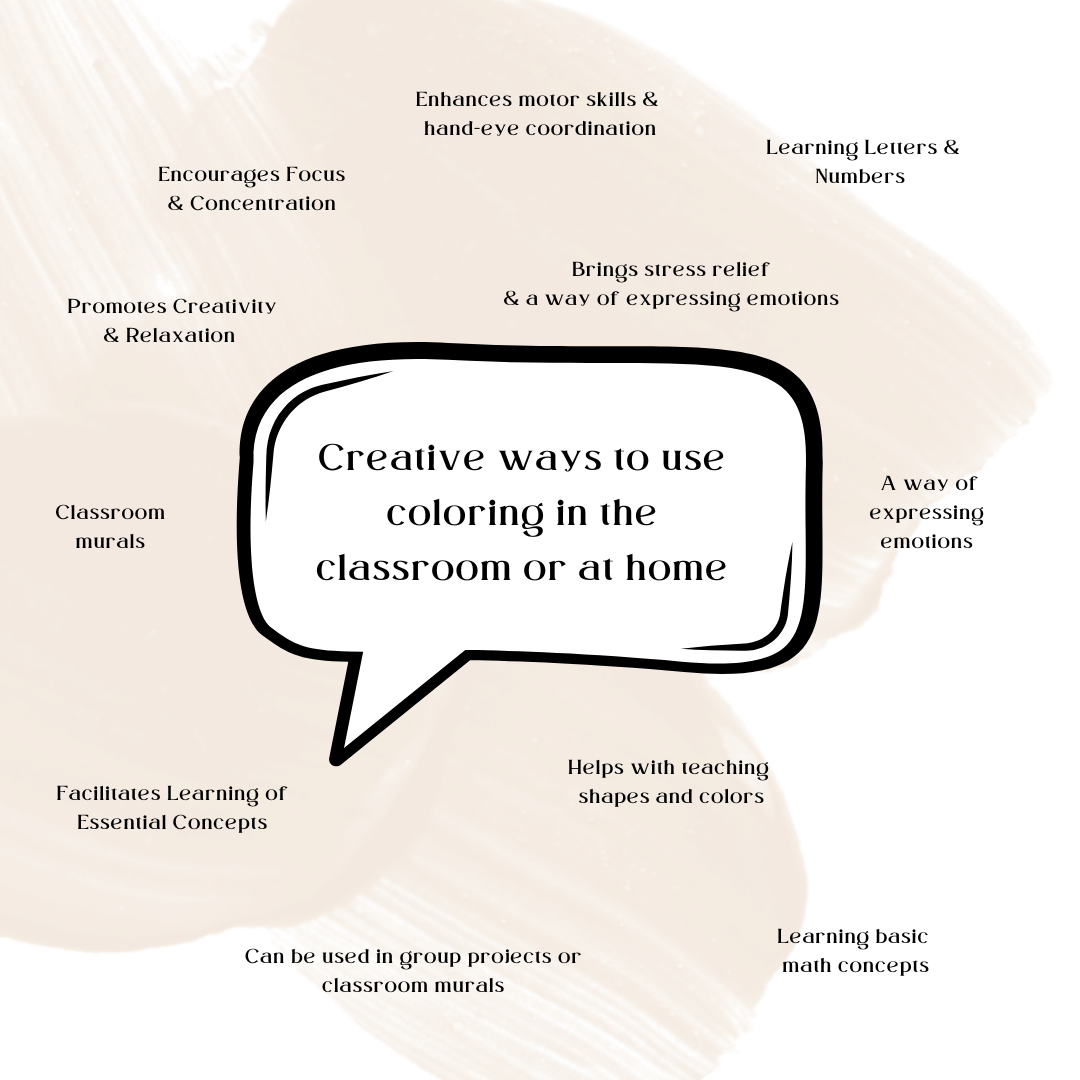
Coloring books have long been a favorite pastime for children, but did you know they offer significant educational and developmental benefits? Whether you're a teacher, homeschooler, parent, stay-at-home mom, or daycare educator, integrating coloring books into your daily routine can be both fun and beneficial. In this blog post, we'll explore creative ways to use coloring books in educational settings and at home.
Educational and Developmental Benefits of Coloring Books
Enhances Fine Motor Skills and Hand-Eye Coordination
Coloring within lines helps young children improve their fine motor skills and hand-eye coordination. These skills are essential for writing, cutting, and other classroom activities.
Promotes Creativity and Imagination
Coloring allows children to explore a world of colors and shapes, fostering creativity and imagination. They can experiment with different color combinations and create unique masterpieces.
Facilitates Learning of Essential Concepts
Coloring books can be used as a tool to teach letters, numbers, shapes, and basic math. This makes learning more engaging and interactive for young children.
Encourages Focus and Concentration
The act of coloring requires focus and concentration, making it an excellent activity for children with attention difficulties. It helps them practice sitting still and focusing on a task for an extended period.
Provides a Calming and Therapeutic Activity
Coloring has a calming effect that can help reduce stress and anxiety in children. It provides a quiet, meditative activity that can be especially beneficial during stressful times.
Creative Ways to Integrate Coloring Books
Lesson Plans for Various Subjects
Teaching Shapes and Colors
Use coloring books to teach shapes and colors. Have children color different shapes and label them. This not only helps them recognize shapes but also reinforces their understanding of colors.
Learning Letters and Numbers
Incorporate alphabet and number coloring books into your lesson plans. Children can color the letters and numbers while practicing their writing skills. This method makes learning more interactive and enjoyable.
Basic Math Concepts
Coloring books can be used to teach basic math concepts such as addition and subtraction. For example, children can color groups of objects and then add or subtract them. This visual approach helps in better understanding mathematical concepts.
Collaborative Coloring Activities
Group Projects
Encourage teamwork and communication skills by organizing collaborative coloring activities. Divide children into small groups and assign them a large coloring poster. They must work together to complete the poster, promoting cooperation and teamwork.
Classroom Murals
Create a sense of community by having the entire class work on a classroom mural. Each child can color a section of the mural, which can then be displayed in the classroom. This fosters a sense of accomplishment and belonging.
Therapeutic Uses
Stress Relief
Coloring can be a therapeutic activity that helps children relax and unwind. Set aside time for coloring sessions, especially during stressful periods such as exam times or after a busy day.
Emotion Expression
Use coloring books to help children express their emotions. Provide them with coloring books that focus on different emotions and encourage them to color their current feelings. This helps in emotional regulation and self-expression.
Incorporating coloring books into your teaching or parenting routine offers a wealth of benefits, from enhancing fine motor skills to providing a calming and therapeutic activity. By integrating these creative ideas, you can make learning more engaging and enjoyable for children.
Let's make learning fun and colorful!
By using coloring books creatively in the classroom or at home, you can provide children with a multifaceted learning experience that is both educational and enjoyable. Whether you're teaching shapes, promoting teamwork, or offering a therapeutic activity, coloring books are a versatile tool that can make a significant impact on a child's development.



1 Comment